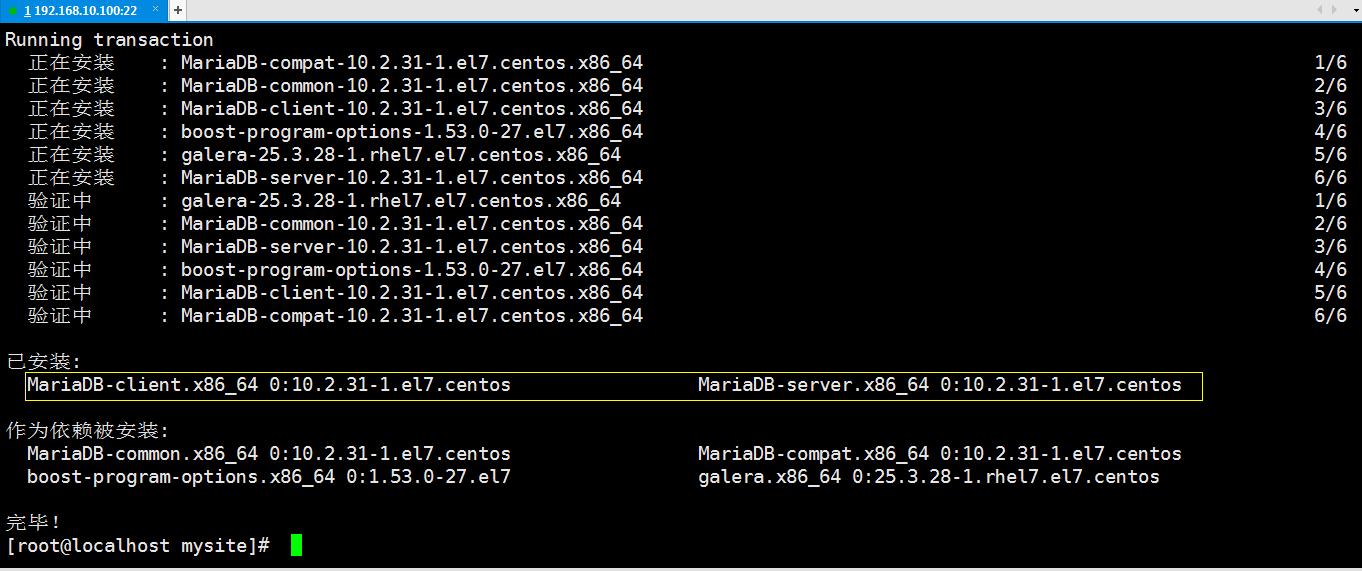

In theįollowing example, a user named demouser is created. You can create a new user that applications can use to connect to the new database.

Usually have more privileges than they need. When applications connect to the database using the root user, they Use the instructions in this section to add users for the database and to grant and revoke privileges. The following example shows the query and example output: SHOW DATABASES You can verify its creation by running a query to list all databases. To create a database, log in to the mariadb shell and run theįollowing command, replacing demodb with the name of the database that you want to create: CREATE DATABASE demodb Some applications create a database as part of their setup process, but others require you to create a database and tell the application about it. The database stores the data, and it is the database that applications are trying to access when they interact with MariaDB. MariaDB is aĭatabase server, meaning that it tracks databases and controlsĪccess to them. There is a difference between a database server and a database,Įven though those terms are often used interchangeably. If your application connects remotely, the host entry that MariaDB looks for is the IP address or DNS hostname of the remote computer (the one from which the client is coming). Any new users that you create must have localhost in their host field. If you’re running your application on the same computer as the MariaDB server, the host that it connects to by default is localhost.

You usually need to set a user for only the host from which you typically connect. The root user in this example is defined for localhost, for the IP address of localhost, and the hostname of the server. Users are associated with a host, specifically the host to which theyĬonnect.
#RESTART MARIADB CENTOS 7 PASSWORD#
The following example is the output for the preceding query: SELECT User, Host, Password FROM er

The following list describes the parts of that command: If you want to see what users are set up in the MySQL user table, run the following command: SELECT User, Host, Password FROM er Inside that database, the user information is in a table, a dataset that is named user. MariaDB and MySQL store user information in their own databases. The following shell prompt should appear: MariaDB > Installation, or if you haven’t set one, press Enter to submit no When you’re prompted for a password, enter the one that you set at There is more than one way to work with a MariaDB server, but this articleįocuses on the most basic and compatible approach: the mariadb shell.Īt the command prompt, run the following command to launch the shell and enter it as the root user: /usr/bin/mysql -u root -p Use the following command to do this: sudo systemctl enable rvice To ensure that the database server launches after a reboot, you mustĮnable the chkconfig utility. Use the following command to stop MariaDB: sudo systemctl stop rvice Use the following command to start MariaDB: sudo systemctl start rvice If the system is already started, a message informs you that the service is already running. Use the following command to set the root password and other important settings: /usr/bin/mysql_secure_installationĪfter the installation is complete, you can start the database service by using the commands in this section. Run the following command to allow remote access: firewall-cmd -zone=public -add-service=mysql -permanentīecause you have just installed the MariaDB database server, the rootĪccount has no password set.
#RESTART MARIADB CENTOS 7 INSTALL#
Install the MariaDB server through the CentOS package manager (yum) by running the following command at a command prompt: sudo yum install mariadb-server Install the database serverįollow the steps in this section to install the core database server. Check your application documentation for details. You might need to install other packages to let applications use MariaDB, such as extensions for PHP. This article describes a basic installation of a MariaDB database server on CentOS Linux. MariaDB was created by the original developers of MySQL, and is an enhanced, drop-in replacement for MySQL with library binary equivalency and exact matching with MySQL APIs and commands. With the release of CentOS 7, MariaDB replaced MySQL as the default database system.


 0 kommentar(er)
0 kommentar(er)
